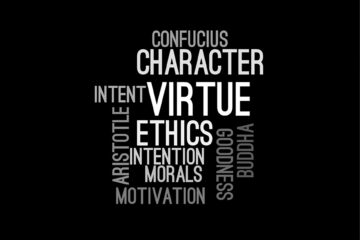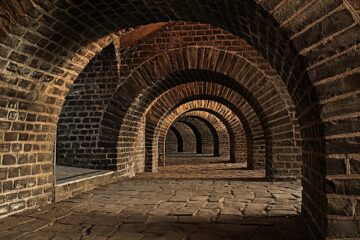![]()
Introduction:
The military forces of the Republic of India are the Indian armed forces. The Indian Armed Forces have 3 professional uniform services that are, Indian Air Force, Indian Navy and Indian Army. Apart from this, the Indian Armed forces are also supported by Indian Cost guard and Paramilitary organization (Assam Rifles and Special Frontier Force). There are many inter-service commands and institutions like Strategic Forces Command, Andaman and Nicobar Command and Integrated Defense Staff. The Supreme Commander of Indian Armed forces is the President of India. It is under the Ministry of Defense of the government of India. It is the second-largest military force in the world and it has the largest voluntary army in the world. It has the third-largest defence budget in the world. In 2015 as per the report of Credit Suisse, the world’s fifth most powerful military forces is of Indian Armed Forces and as per 2020 Global Fire Power report, the Indian Armed Forces is the fourth most powerful force.
The Indian Armed Forces have taken part in a number of major military operations like:
- Indo-Pakistani Wars of 1947, 1965 and 1971.
- The Portuguese- Indian War.
- ·Sino- Indian War.
- Chola incident 1961.
- Sino- Indian Skirmish 1987
- Kargil War
- Siachen Conflict.
On December 7, every year Indian honours its Armed Forces and military personnel on Armed Forces Flag.
History
In the 19th century under British rule, the Indian army was formed and it was merged and brought under the crown. In both the World Wars British Indian Army fought. After the independence of India in 1947, the armed forces succeeded the military of British India and after the partition between India and Pakistan, the armed forces got reduced. Indian armed forces fought in a war with the People’s Republic of China and all the 4 wars against Pakistan. In several United Nations Peacemaking operations, Indian Armed forces has also participated. It is also the second-largest contributor to peacemaking force.
Reasons of Casualties
Most of the people in India want to enter into armed forces. It has good attraction among the people. The life of armed force people is highly disciplined with a very good uniform which makes them look very elite and sophisticated. The benefits apart from the pay scale given by the government are also very attractive. But it’s seen that apart from all this the actual life of armed forces people is highly tensed especially those people who are in the forefronts. They are under a lot of stress, pressure and turmoil. Some of them are posted in the border areas where the atmospheric temperature is very low and it is not very easy to survive in these conditions. At times they have to go without food. It is observed that physical causalities are more than twelve times the number of battle causalities in the army. Night driving is discouraged only when it is not operationally required. The manpower of the army is very huge and every day massive movements of vehicles in difficult terrains have to take place around the country. Stress-related deaths like suicides and fratricide are also very huge. Sometimes soldiers undergo mental stress as they are not able to help their families back at home to solve their problems.
The major problem faced in several in most parts of the world is trauma due to insurgency. The militancy’s aim is to create an atmosphere of terror among the people. To some extent they succeed in it. The militants attack surprisingly with the shoot and run, a burst of volumes of ammunition. Due to this, there are casualties which differ. A proper medical facility is required for critically injured patients. The severity of wounds caused by gunshot depends on the following factors:
- Tumbling behavior of the bullet.
- Temporary cavitations.
- Missile velocity
- Bullet fragmentation
- Target density
- Shooting distance.
Extensive damage is caused if the velocity of the bullet is high as it will have great kinetic energy, so there is a greater possibility of fragmentation and formation of secondary missiles.
In battle casualties in 2017, Minister of State for Defense, Subhash Bhamre said in Lok Sabha that the army lost 106 personnel including 8 officers and there were 155 non-fatal battle casualties. 98 Junior Commissioned Officers and Officers of other ranks died in battle casualties which include violation of cease fire, enemy fire across the Line of Control, terrorist attacks, avalanche, land slide and mine blast.
Treatment of Battle Casualties
The casualties of battle are first treated by a medical officer and if serious, they are directly taken to Intensive Care Unit (ICU) where they are thoroughly assessed by the surgeon himself and patients were resuscitated and prepared for surgery. If there are mass casualties then experienced medical officers along with other specialist help the surgeons in triage:
- In allocating priorities for managing the mass casualties are received in separate reception centre where the extent of injury is evaluated on the bases of revised comma stroke.
- Severity of trauma is also observed.
Blood is given to shocked patients if required. The time gap for initial evaluation, resuscitation, basic radiological investigation and preparation of critically ill patients for operation theatre is only of a few minutes. In modern war fair, 20% – 47% of injuries are caused by bullets, in case of highly specialized operations like Desert Storm, it is 5%.
Claim in Case of Battle Casualties
Subhash Bharmre also said that as per existing rules if a pensioner is a member of Central Service Group “A” before his retirement and wanted to accept commercial employment 1 year before the date of retirement then he has to take prior permission. For granting permission the government takes No Objection from Cadre Controlling authority.
There was a demand of the army for enhancement of monetary assistance to next of kin of battle casualties. Defence Minister, Rajnath Singh gave approval for enhancement of battle casualties to next of kin from 2-8 lakhs. This will be granted under the Army Battle Causalities Welfare Fund (ABCWF). This assistance is given to the addition to family pension, financial assistance from army group insurance, Army Welfare Fund and ex-gratia amount. The ABCWF was set up under the Department of Ex-Servicemen Welfare (ESW). This was set up as a number of people wanted to provide monetary assistance to families to battle casualties. This approach of people was after February 2016, incident that took place at Siachen where 10 soldiers got buried. When Rajanath Singh was Home Minister he has launched “Bharat Ke Veer Fund” to help families of a paramilitary person killed or injured in the action.
ABCWF was instituted in July 2017 and it was implemented with effect from April 2016. Under the Charitable Endowments Act,1890 a fund was created. A bank account was opened for the public to deposit money. This fund is to be used for the welfare of children of battle casualties in the form of additional ex-gratia.
Criticism
On several issues, Indian Military has drawn criticism like lack of political reform, lack of adequate ammunition, obsolete equipment and inadequate research and development due to over-reliance on foreign imports. Apart from this, there is a lack of strategic culture among the political class in India which has hindered the effectiveness of Indian Military. As per the report published US Congress, the developing world’s leading arms purchaser is India.
The soldiers who have become casualties in battle are referred to as Martyrs in Armed forces but this status is denied for paramilitary forces. In December 2016, the Minister of Home Affairs informed the Lok Sabha that the word “martyr” should not be used in connection to any casualties of battle in Armed Forces. Instead, any soldier killed in action is called battle causality.
It is seen that excessive casualties of the army are in Jammu and Kashmir, especially of level commanding officers. There was a case of the Col.N.J.C Nair CO16 Martha, Kirti Chakra who got involved in a firefight with terrorist because he had no option left with him. He laid down his life in 1993 and got Ashok Chakra. The question here arises is if with few days of training two to three terrorists are able to cause so much of casualties then our Armed Force professionals with special training of 15-25 years are not able to do the same. This means that there is something wrong somewhere. It means that our training and equipments are not up to the mark and also we are investing less on it. We do not take the casualties very seriously as it should be taken. The best return on investment from armed forces is to prevent wars so that the resources for our nation can be used for the purpose of prosperity and it not to win the wars. The terrorist attacks which are taken in Jammu and Kashmir is actually not a terrorist attack but it is only causing terror among unarmed civilians. Very small teams are also taking down our armies.
After Bala Court strike, the Indian mainland was attacked in the day time on February 27, 2019, by Pakistan Air Force. They attacked, lost some and took some and went back. But there was not much response by India. There was very little retaliation for extracting severe penalties.
Safety Measures to be Taken by Government
The major fatalities is because of the wounds caused by a gunshot which is aimed at the face, head, neck, etc. So the government should provide lightweight effective and flexible bulletproof protection. The armour which the Indian army uses is not flexible and it does not protect the facial and neck area. The studies have proven that the injuries in these areas are accounted for 8.3% of the total death. Strategies should be made by the government to protect armed forces from combat and deployment stress. The deployment must take into account the range of missions and the environment they are going to encounter with.
Conclusion
Our Indian government is taking all the important measures to protect the armed forces and to minimize the risk factors. The broad measures which they are taking are to upgrade security infrastructure and intelligence capabilities, to refine operational drill and response mechanisms, to equip the forces with the lasted state- of- art weapon, equipment and surveillance devices, medical support and quick casualties evacuation mechanisms. Government is also taking measure to include provisioning bulletproof jackets.



0 Comments